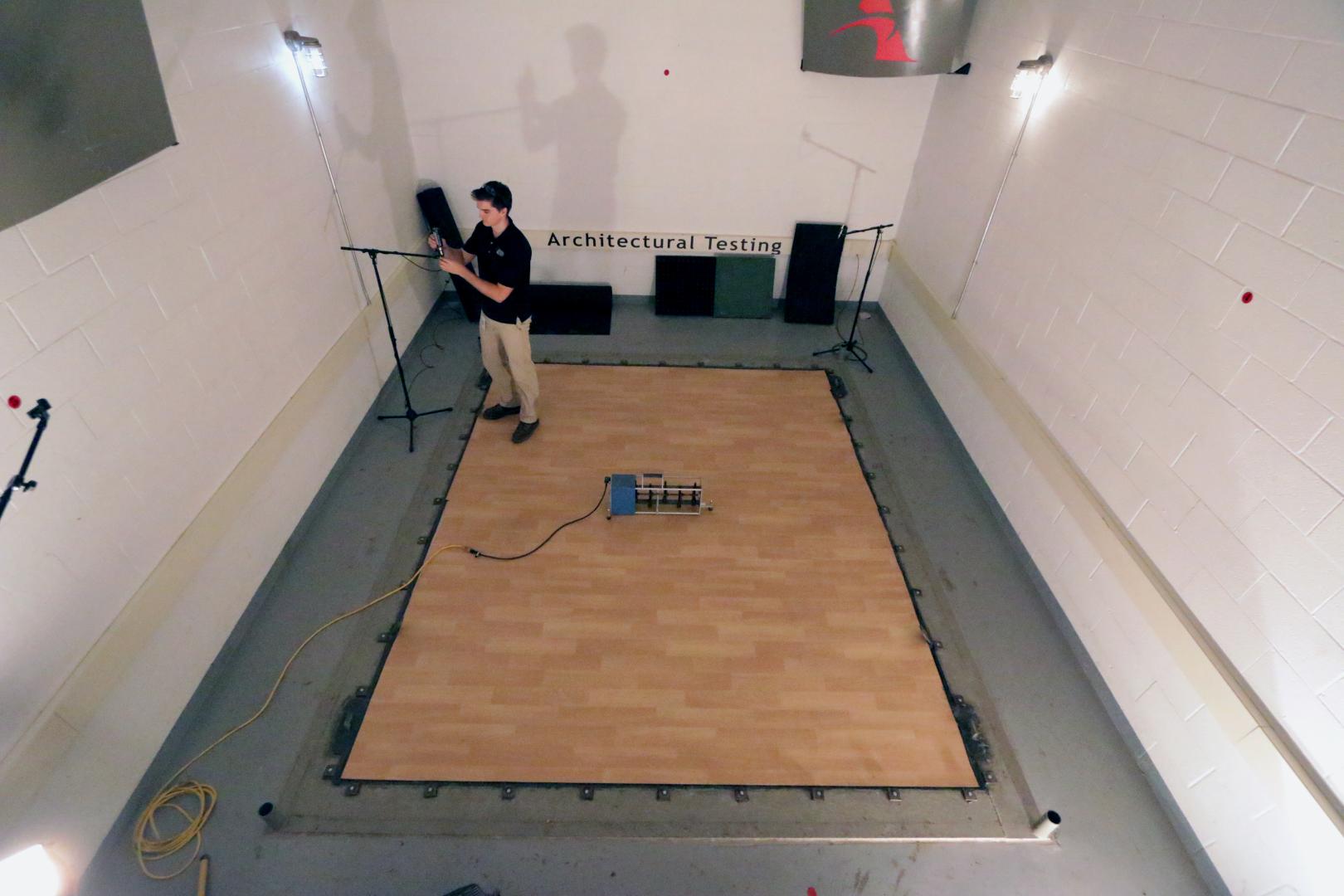
Acoustics Basics Part 2: Sound Concepts – Delta IIC and HIIC
AUTHOR:
Mike Raley, INCE Board Certified Acoustic Engineer
In Part 1 of this series (link) we covered the common STC and IIC acoustic ratings. As a quick refresher, here’s an overview of the two basic categories of sound in buildings and which rating applies to each:
BASIC CATEGORIES OF SOUND IN BUILDINGS:
1.) AIRBORNE SOUND (STC)
Airborne sound encompasses sounds that begin in the air, things like TVs, stereos, barking dogs, people talking, and yelling kids.
2.) STRUCTURE-BORNE SOUND (IIC)
Structure-borne sounds are those that start in the building structure, things like footsteps, dropped objects, cabinet door slams, and rolling objects (vacuum, suitcase, etc.).
Ultimately, both types of sound travel through the air when they’re transmitted from a building surface (wall, ceiling, floor) to our ears, but it is where they start that we use to make the distinction.
In this part 2 of Acoustics Basics, we’ll consider two additional acoustical ratings that address the reduction or isolation of structure-borne sound: the ΔIIC (read as Delta IIC) and HIIC ratings. These ratings produce results that are less affected by the building structure and provide better comparisons of flooring and underlayments.
ΔIIC (Measures Structure-Borne Sound Isolation)
Often when folks hear all the different variables that can affect an IIC rating they end up asking “how can I get an apples-to-apples comparison of underlayments?” The answer is the ΔIIC rating. Like IIC, the ΔIIC is a measure of the structure-borne sound isolation provided by an assembly; but the ΔIIC specifies that the base assembly is always a 6-inch concrete slab with no gypsum board ceiling below. To conduct a ΔIIC test, the following steps should be taken.
1. Perform an IIC test on the 6-inch concrete slab without any flooring or underlayment.
2. Perform an IIC test on the 6-inch concrete slab with the flooring and underlayment installed.
3. Calculate the difference in measured sound levels with and without the flooring and underlayment.
4. Use the calculated differences to determine the ΔIIC rating using a special procedure.
Full details of the test method can be found in the ASTM E2179 test standard.
While ΔIIC ratings can be useful when comparing the performance of underlayments, there are some important things to keep in mind:
1. ΔIIC ratings depend on the underlayment and the finish flooring tested (see below)
2. ΔIIC ratings only apply to concrete slabs; they cannot be added to other base structures like those with open-web trusses and solid wood joists (see below)
The figure below shows three different floor finishes (engineered wood, LVT, and tile) tested on the same Ecore 5mm ECOsilence underlayment along with the resulting ΔIIC ratings.
The figure below shows the change in IIC ratings for the same flooring and underlayment on a 6-inch concrete slab and on a wood open-web truss assembly.
HIIC
The IIC and ΔIIC ratings have been around for many years and are widely used; but there’s also a new high-frequency impact insulation class (HIIC) standard (ASTM E3222) that helps further identify the performance differences between flooring and underlayments. Research has shown that impact sound from floor/ceiling assemblies can generally be lumped into two categories: low-frequency “thuds” and mid- and high-frequency “clicks.” A good example of the “thuds” is someone walking heavily on their heels in a lightweight wood-framed structure like a typical single-family home. The “clicks” can be thought of as the sound of hard-soled shoes, especially on hard floors like tile.
Flooring and underlayments can have significant effects on the impact insulation of “clicks.” The impact insulation of “thuds” is primarily driven by the stiffness of the base structure and is largely unaffected by changes in flooring and underlayment. The figure below shows the IIC and HIIC ratings for LVT on 2mm and 5mm underlayment on two very different structures: a heavyweight 6-inch concrete slab and a lightweight 18-inch wood open-web truss. You can see that when increasing the underlayment thickness there’s a small change in IIC ratings, but a big change in HIIC ratings.
There is currently no approved test standard that addresses the “thuds,” but the following graph shows the different measured sound levels in the various frequency ranges that correspond to the “thud” range, the IIC range, and the “click” or HIIC range.
SUMMARY
The metrics we most commonly use to specify and evaluate the level of sound isolation between spaces like apartments and condos are the STC and IIC ratings, in large part because they’re what’s specified in the building code. However, these ratings aren’t great for evaluating the effects of flooring and underlayments; STC ratings are largely unaffected by flooring and underlayments, and IIC ratings often depend on the building structure as much as they do the flooring and underlayment.
To better understand the effects of just the flooring and underlayment we can use the ΔIIC and HIIC ratings. The ΔIIC rating always uses the same structure, a 6-inch. concrete slab, so it shows us the effect of flooring and underlayment alone. HIIC ratings can be obtained for any floor/ceiling structure, but they look at the portion of the test data that is mostly affected by flooring and underlayment, so HIIC ratings better differentiate between different flooring and underlayments.
When selecting flooring and underlayment for your particular assembly, it is important to consider all the details of the assembly and to get acoustical test data for an assembly as close as possible to yours. Be wary of flooring and underlayments that publish ratings without any details of how they were tested. Remember, you will never be as fast as Usain Bolt just because you are wearing his shoes, and your assembly won’t be assured to get an IIC 70 just because you use an underlayment that tested that high on some unknown assembly.
For more information about acoustics, visit Ecore's Athletic page..




